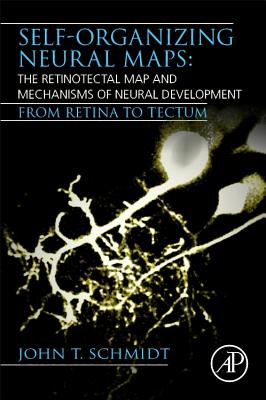Models of Horizontal Eye Movements: Part 4, A Multiscale Neuron and Muscle Fiber-Based Linear Saccade Model
暫譯: 水平眼動模型:第四部分,多尺度神經元與肌肉纖維基礎的線性掃視模型
Alireza Ghahari, John D. Enderle
- 出版商: Morgan & Claypool
- 出版日期: 2015-02-01
- 售價: $2,130
- 貴賓價: 9.5 折 $2,024
- 語言: 英文
- 頁數: 122
- 裝訂: Paperback
- ISBN: 1627056580
- ISBN-13: 9781627056588
-
相關分類:
Computer Vision
海外代購書籍(需單獨結帳)
商品描述
In this book, a multiscale model of the saccade system is presented, focusing on a multiscale neural network and muscle fiber model. Chapter 1 presents a comprehensive model for the control of horizontal saccades using a muscle fiber model for the lateral and medial rectus muscles. The importance of this model is that each muscle fiber has a separate neural input. This model is robust and accounts for the neural activity for both large and small saccades. The muscle fiber model consists of serial sequences of muscle fibers in parallel with other serial sequences of muscle fibers. Each muscle fiber is described by a parallel combination of a linear length tension element, viscous element, and active-state tension generator. Chapter 2 presents a biophysically realistic neural network model in the midbrain to drive a muscle fiber oculomotor plant during horizontal monkey saccades. Neural circuitry, including omnipause neuron, premotor excitatory and inhibitory burst neurons, long lead burst neuron, tonic neuron, interneuron, abducens nucleus, and oculomotor nucleus, is developed to examine saccade dynamics. The time-optimal control mechanism demonstrates how the neural commands are encoded in the downstream saccadic pathway by realization of agonist and antagonist controller models. Consequently, each agonist muscle fiber is stimulated by an agonist neuron, while an antagonist muscle fiber is unstimulated by a pause and step from the antagonist neuron. It is concluded that the neural network is constrained by a minimum duration of the agonist pulse, and that the most dominant factor in determining the saccade magnitude is the number of active neurons for the small saccades. For the large saccades, however, the duration of agonist burst firing significantly affects the control of saccades. The proposed saccadic circuitry establishes a complete model of saccade generation since it not only includes the neural circuits at both the premotor and motor stages of the saccade generator, but it also uses a time-optimal controller to yield the desired saccade magnitude.
商品描述(中文翻譯)
在本書中,提出了一個關於眼跳系統的多尺度模型,重點在於多尺度神經網絡和肌肉纖維模型。第一章介紹了一個綜合模型,用於控制水平眼跳,該模型使用了側直肌和內直肌的肌肉纖維模型。這個模型的重要性在於每根肌肉纖維都有單獨的神經輸入。這個模型具有穩健性,能夠考慮到大眼跳和小眼跳的神經活動。肌肉纖維模型由串聯的肌肉纖維序列組成,並與其他串聯的肌肉纖維序列並行。每根肌肉纖維由一個線性長度-張力元件、粘性元件和主動狀態張力發生器的並聯組合來描述。第二章介紹了一個生物物理上現實的神經網絡模型,該模型位於中腦中,用於驅動肌肉纖維的眼動植物,在猴子的水平眼跳期間。神經電路,包括全暫停神經元、前運動興奮性和抑制性突發神經元、長延遲突發神經元、持續神經元、介入神經元、外展神經核和動眼神經核,旨在檢查眼跳動力學。時間最優控制機制展示了神經命令如何在下游的眼跳通路中通過實現拮抗劑和協同劑控制模型進行編碼。因此,每根協同劑肌肉纖維由一個協同劑神經元刺激,而拮抗劑肌肉纖維則因拮抗劑神經元的暫停和步進而未被刺激。結論是,神經網絡受到協同脈衝最小持續時間的限制,而決定小眼跳幅度的最主要因素是活躍神經元的數量。然而,對於大眼跳,協同脈衝的持續時間顯著影響眼跳的控制。所提出的眼跳電路建立了一個完整的眼跳生成模型,因為它不僅包括眼跳生成器的前運動和運動階段的神經電路,還使用了一個時間最優控制器來產生所需的眼跳幅度。



























